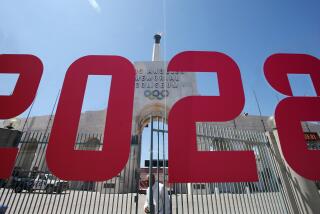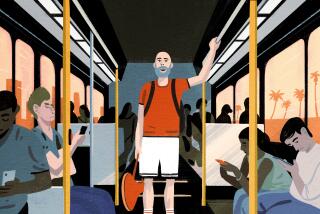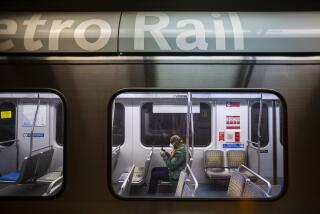Britain : Famed London Buses May Be Doomed
LONDON — A famed symbol of this city--the double-decker red bus--may soon become an endangered species.
In its zeal for privatization, Prime Minister John Major’s government recently opened London’s bus lines to all comers. That action may doom the red bus, a sight as dear to Londoners and tourists as Big Ben and Buckingham Palace.
In its domestic program recently unveiled, the government decided to deregulate London’s bus system, which means that just about anyone with a bus-like vehicle can set up service along the capital’s streets.
But the London Tourist Board warned of the “chaos and confusion” that could ensue with new transport companies crowding onto lucrative routes, charging what they choose and painting mini or maxi buses in garish colors.
Robert Chenery, a senior Tourist Board official, declared: “Throughout the world, the red bus is one of London’s most distinctive and recognizable symbols. Under deregulation, we might see all colors of the rainbow, from pink buses with multicolored spots, or blue buses with shades of yellow. I think it would be a mess.”
More important, officials believe that the busiest routes will draw the most new buses, while lighter-traveled services may be abandoned to the distress of poorer passengers who rely on them.
“We are afraid you’ll see all kinds of vehicles trying to move down Oxford Street,” said another Tourist Board official, Alison Baldock, speaking of a major central London shopping thoroughfare. “But what about bus service on faraway routes?”
She added that several operators using the most popular routes “will increase the number of vehicles and add to congestion and pollution. Greater use of more, one-person-operated vehicles . . . will mean longer boarding times and additional delays for the road users.”
Deregulation of buses has already occurred outside London. But where it has happened, fares have risen and ridership has fallen.
Many of the new bus companies have failed quickly. And with new bus lines coming and going, timetables have been impossible to assemble--further confusing passengers.
In central London, traffic moves only 3 m.p.h. faster now than it did in 1912, according to government estimates. Some traffic experts are calling for well-policed bus lanes as a way to improve service.
London columnists are rallying behind the red buses. As Angus McGill put it in the London Evening Standard: “Every red London bus we lose diminishes the pleasant, reassuring familiarity of ordinary daily life here. We should value such things, not let them slip so feebly away. We will lose a great many more buses and quite soon, too, unless someone has a change of heart.”
Former bus conductor Eden Brathwaite declared: “I think it is definitely out of order that there will be no more red buses. Everyone recognizes them; you identify them with the country, the city. I would be sad to see them go.”
Aboard No. 14, which runs through central London from Euston Station to Putney Heath, conductor Michael Springer, issuing tickets and ringing the go-ahead bell, said: “Everyone associates London with the red bus. With privatization, there will be chaos and panic. No one will know where they are going or what bus to take. With more buses on the road, the service will only get worse.”
London tourist officials hope that conservationists can mount a campaign on behalf of the red, two-decker buses--similar to the push that squelched a plan four years ago to paint London’s traditional red mailboxes yellow.
More to Read
Sign up for Essential California
The most important California stories and recommendations in your inbox every morning.
You may occasionally receive promotional content from the Los Angeles Times.









